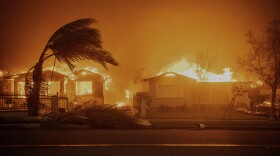Earthquake early warning alerts became publicly available throughout California on Thursday, the Governor's Office of Emergency Services said.
The system's statewide debut coincides with the 30th anniversary of the Loma Prieta earthquake that ravaged the San Francisco Bay area on Oct. 17, 1989, as well as the annual Great Shakeout safety drill.
The warnings produced by the ShakeAlert system will be pushed through a smartphone app called MyShake and the same wireless notification system that issues Amber Alerts.
RELATED: Gov. Brown OKs Plan For Earthquake Early Warnings
The state earthquake app, developed at the University of California, Berkeley, is available for download to IOS users through iTunes and through GooglePlay stores for Android phones.
The system does not predict earthquakes. Rather, it detects the start of an earthquake and calculates location, intensity and sends alerts to areas where shaking is likely to occur from quakes of magnitude 4.5 or greater.
The alerts have been in development for years and last year were made broadly available to businesses, utilities, schools and other entities.
Large-scale public notification has been available for Los Angeles County since the start of the year through an app developed for the city of Los Angeles, but it hasn't been triggered yet.








